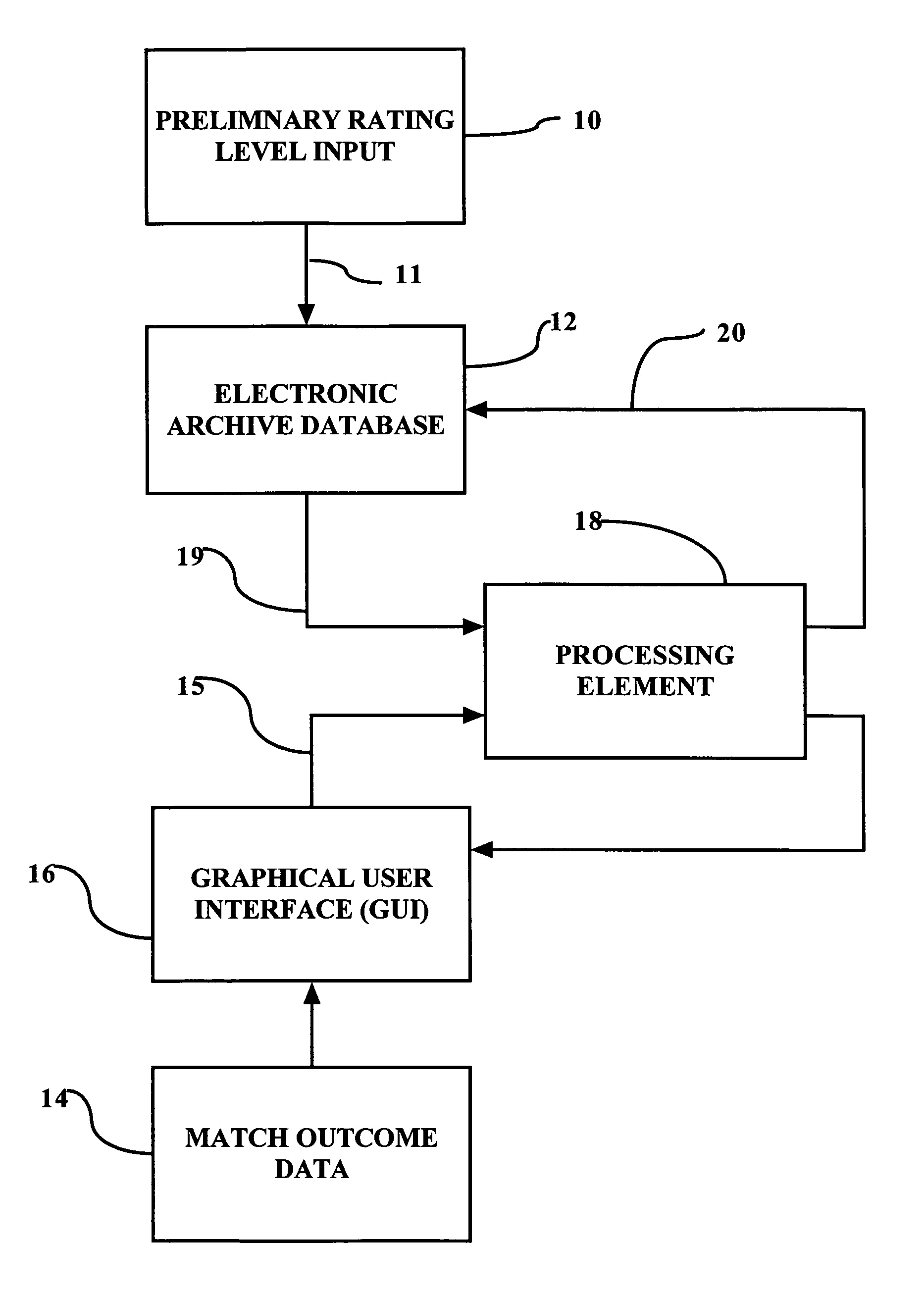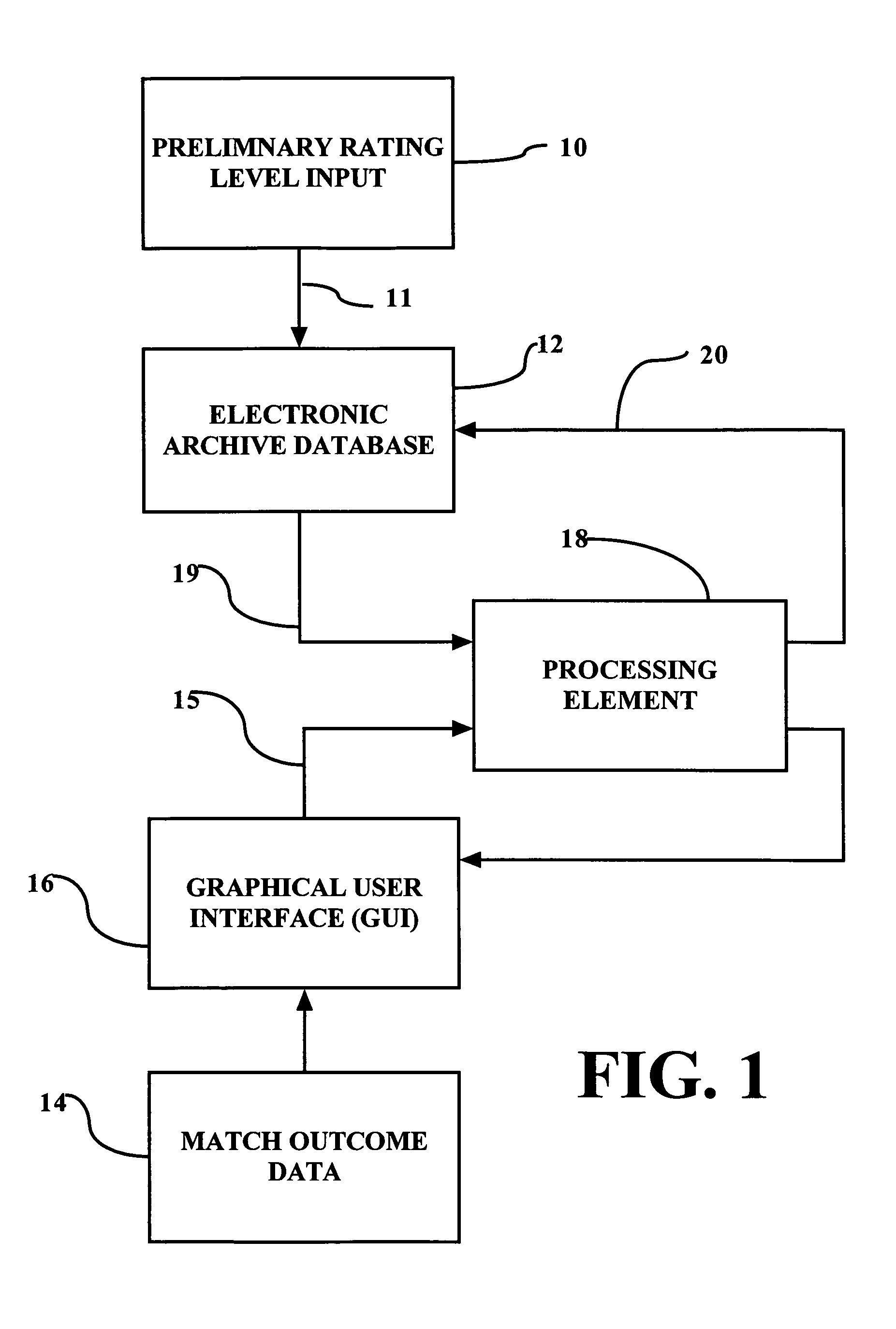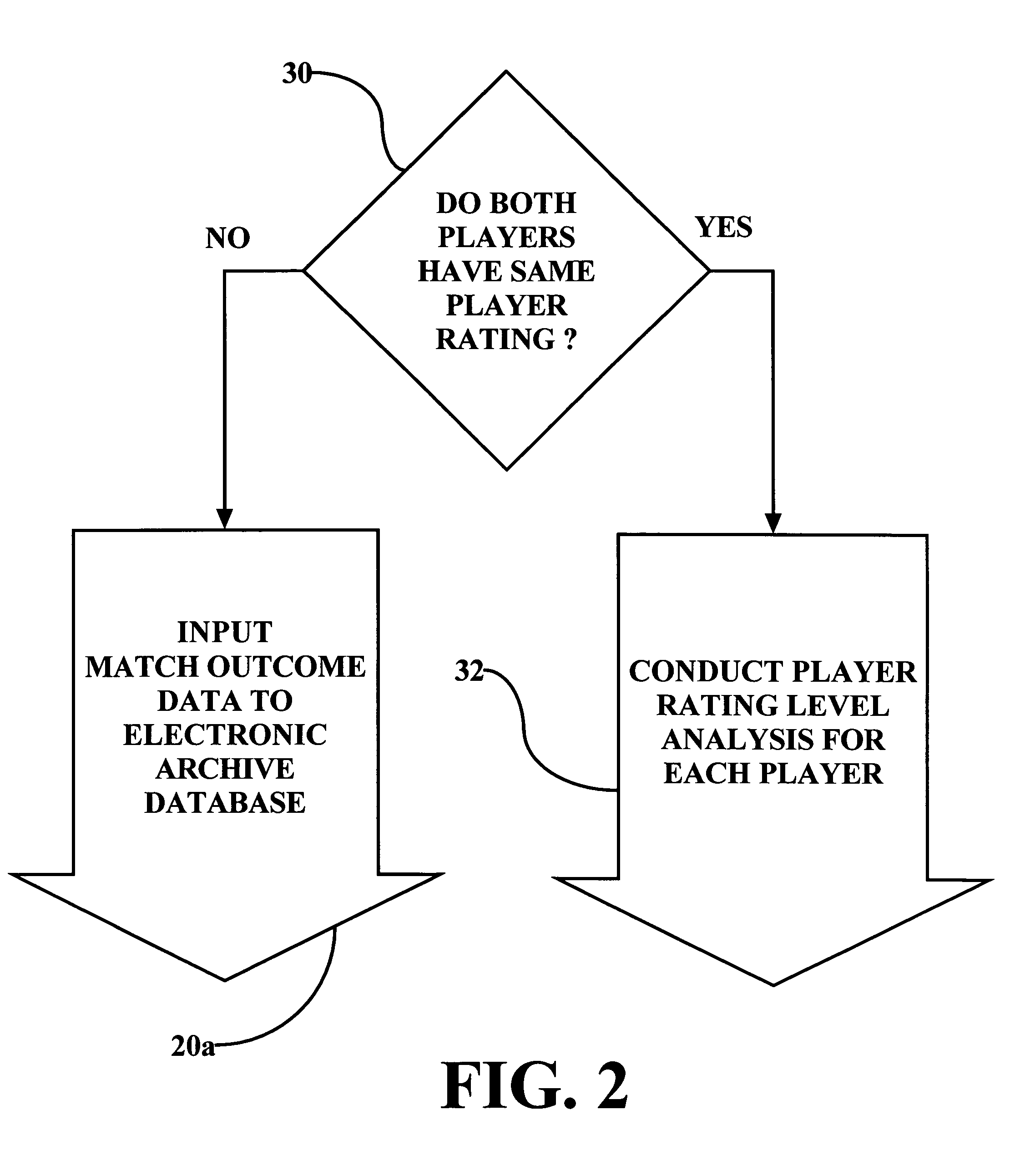System, method and computer program product for determining a tennis player rating
a tennis player and computer program technology, applied in racket sports, indoor games, instruments, etc., can solve the problems of not being competitive, not being able to identify in advance whether potential opponents are available, and the most amateur tournament tennis matches are notoriously non-competitive, so as to improve the tennis playing experience of tennis players
- Summary
- Abstract
- Description
- Claims
- Application Information
AI Technical Summary
Benefits of technology
Problems solved by technology
Method used
Image
Examples
Embodiment Construction
[0036]The present invention now will be described more fully hereinafter with reference to the accompanying drawings, in which preferred embodiments of the invention are shown. This invention may, however, be embodied in many different forms and should not be construed as limited to the embodiments set forth herein; rather, these embodiments are provided so that this disclosure will be thorough and complete, and will fully convey the scope of the invention to those skilled in the art. Like numbers refer to like elements throughout.
[0037]As will be described more fully herein below, the present invention provides systems, methods and computer program products for determining a player rating for at least one tennis player. For the purpose of explanation, the preferred embodiment of the invention is herein described wherein a player rating scale that ranges from 1 to 12, in increments of 1, is employed. Generally, the lower the “rating” the lower the skill and competitive level of the ...
PUM
 Login to View More
Login to View More Abstract
Description
Claims
Application Information
 Login to View More
Login to View More - R&D
- Intellectual Property
- Life Sciences
- Materials
- Tech Scout
- Unparalleled Data Quality
- Higher Quality Content
- 60% Fewer Hallucinations
Browse by: Latest US Patents, China's latest patents, Technical Efficacy Thesaurus, Application Domain, Technology Topic, Popular Technical Reports.
© 2025 PatSnap. All rights reserved.Legal|Privacy policy|Modern Slavery Act Transparency Statement|Sitemap|About US| Contact US: help@patsnap.com



